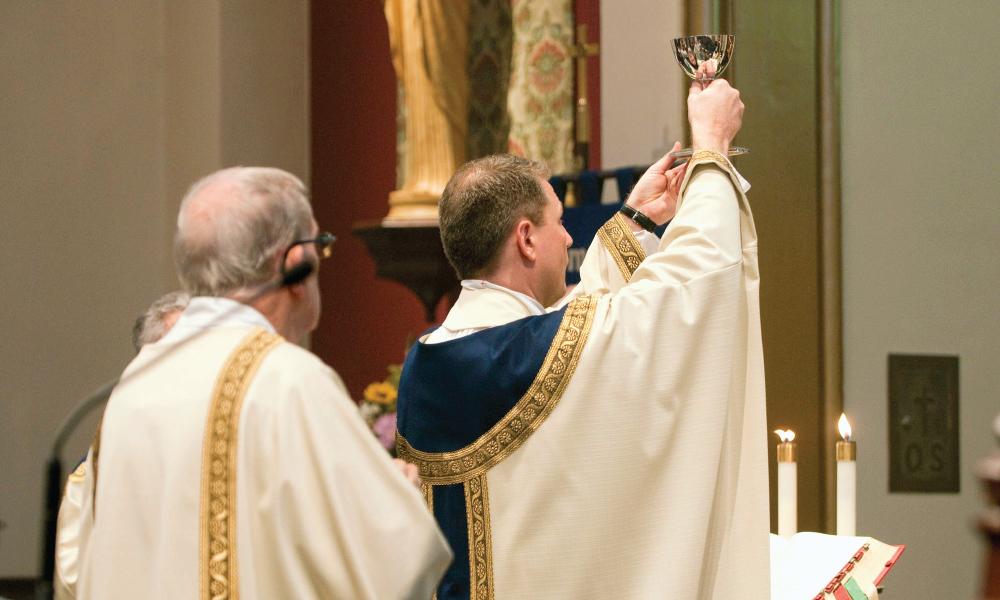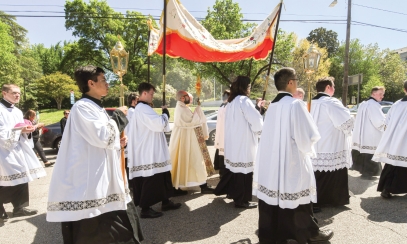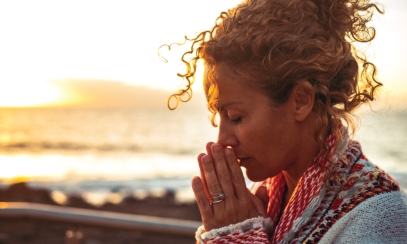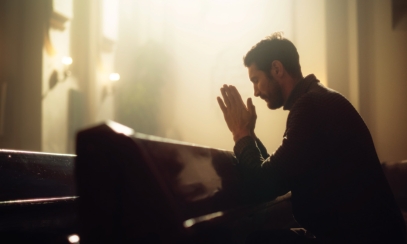
Participation in Eucharistic Liturgy: From Beauty to Goodness
Recently, we reflected on the beauty of the Eucharist. Beauty, together with truth and goodness, gives us a glimpse of the divine. Beauty, wherever we encounter it, gives us a taste of the “always more” of God, the via pulchritudinis (the way of beauty) that we spoke about last month.
We must never forget that the beautiful communicates the divine. I want to reflect a little bit more on that beautiful witness in its liturgical form and explore its confluence with goodness.
We are all familiar with that famous saying attributed to St. Francis: “Preach the Gospel at all times, use words if necessary.” We have no evidence that he ever said this, although it is consistent with his life and has become one of the most frequently used, and sometimes abused, axioms. It is sometimes cited as an excuse not to explicitly talk about Christ in public settings, but it does teach us something valuable. It’s important to remember that words often are necessary, but what the axiom points to is the interconnection between truth, beauty and goodness — the attributes we believe are reflections of divine transcendence (the “always more”) and therefore called the transcendentals.
We see this “beyond” in selfless acts of goodness. That’s why the cross, the selfless act par excellence, reverberates throughout the ages and finds frequent, but often veiled, reflection in literature and entertainment. We often think of this axiom with respect to doing good works; we never seem to apply it to the aesthetic. The fact is that truth, beauty and goodness almost always go together. What is true is generally also good and beautiful. For instance, there is nothing more beautiful than the cross, the supreme act of goodness that reveals truth in its depths. It is from the goodness of Christ that any goodness on our part flows in both imitation and grace.
This is the same foundational beauty and goodness that we encounter in the Paschal Mystery through participation in the eucharistic liturgy. The “use words if necessary” part of the analogy breaks down a bit when we are participating in rites that involve words and actions. Yet, the truth is that the beauty and goodness of the eucharistic liturgy and of our liturgical actions (what we say and do) is our tangible experience of beauty and goodness.
I’d argue that this is probably why the “liturgy wars” in our Church are waged so passionately. Now, it’s not my place, nor is it my desire, to wade into those often-toxic waters. Rather, I want to point out that one of the factors that is behind the debates and arguments on all sides is the sense of the sacred that comes through the beautiful. If you push for explanations, you will often find that disagreements in this arena stem more from fundamental arguments over what constitutes beauty than whether or not the eucharistic liturgy is beautiful. Maybe finding that common ground can help us reach a ceasefire in these family arguments. In the end, all of us agree that we should strive to do our best to communicate the wonder of Christ in liturgical ministry. With that in mind, we should do our best to express any disagreements in a manner that is in accord with the truth, beauty and goodness of what we are striving to embody in the liturgy.
Putting those debates aside, many of us in the pews might not be responsible for liturgical planning, but rather than being passive recipients or critics, we should be mindful of our role in contributing to the aesthetic and tenor of each liturgy. Our full and active participation is vitally important at Mass. As we mention in the liturgy, it is “right and just” for us to “give thanks” (remember, Eucharist means thanksgiving) to the Lord.
True worship is our responsibility as Christians, and it is a key form of Christian witness — one from which our other forms of witness flow. Our liturgical participation is an outward sign of our profession of faith in the One who has become truly present and accessible to us in the Eucharist. Christ never gives us the bare minimum. He always goes above and beyond, always more — words we use to describe transcendence. The gift that we are given in the liturgy is the culmination of this, and our response should imitate the gift: we must strive to enter fully into what we have been given.
The truth, beauty and goodness of our self-offering reflects the gift we receive — the Eucharist, which is the fullness of each.
Leer en español: https://themiscellany.org/participacion-en-la-liturgia-eucaristica-de-la-belleza-la-bondad
Michael Martocchio, Ph.D., is the secretary of evangelization and the director of the Office of Catechesis and Christian Initiation. Email him at mmartocchio@charlestondiocese.org.



